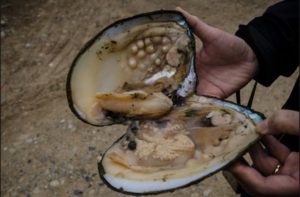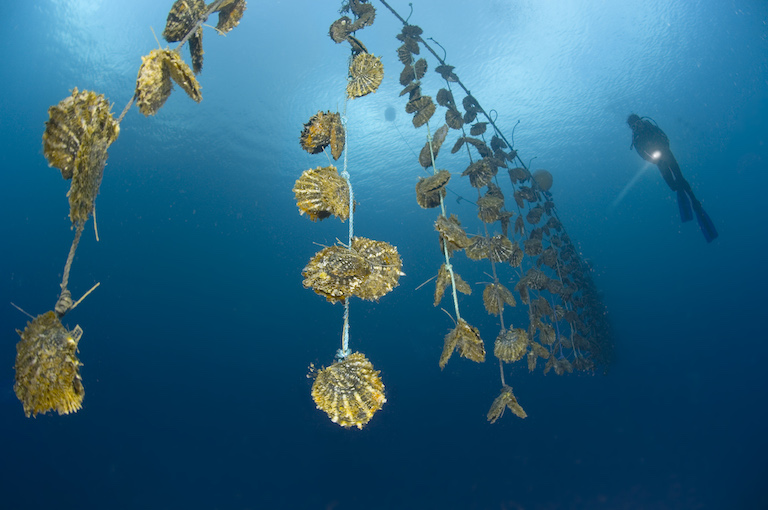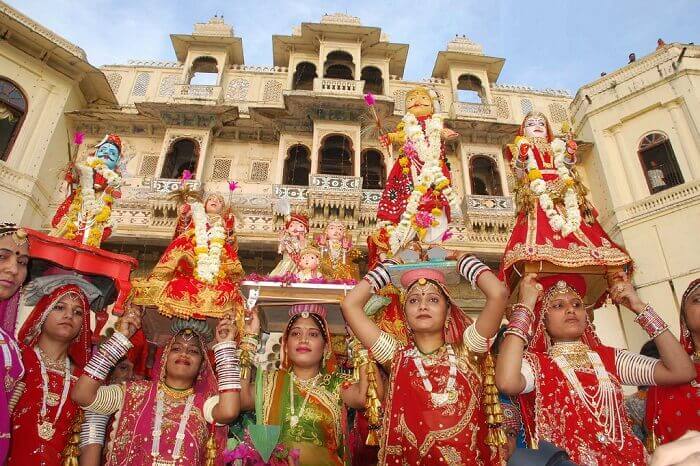Rajasthan Government is exploring ways to develop pearl farming in the state. The government has made all preparations for the pilot project which will be launched in Jaipur and the agriculture department has decided to send a team of officials to Odisha for a week-long training programme on pearl farming for the purpose.
What is Pearl ?
A pearl is a hard object produced by mollusks(a type of sea-animal with shells). They are used in jewelry along with other precious stones like diamond etc. They are majorly of two types: natural pearls and cultured pearls.
Natural pearls form under a set of accidental conditions when a microscopic intruder or parasite enters a bivalve mollusk and settles inside the shell. After a couple of years, a pearl forms and the shell may be found by a lucky pearl fisher.
Cultured Pearls:
 Cultured Pearls are produced artificially through various methods including using freshwater or seawater shells, transplanting the graft into the mantle or into the gonad, and adding a spherical bead as a nucleus. Most saltwater cultured pearls are grown with beads. The cultured pearls make up nearly 100% of the pearls sold today. Natural pearls now only account for less than 1/1000th of a percent of the pearls on the market today.
Cultured Pearls are produced artificially through various methods including using freshwater or seawater shells, transplanting the graft into the mantle or into the gonad, and adding a spherical bead as a nucleus. Most saltwater cultured pearls are grown with beads. The cultured pearls make up nearly 100% of the pearls sold today. Natural pearls now only account for less than 1/1000th of a percent of the pearls on the market today.
Cultured pearls can be distinguished from natural pearls by X-ray examination.
What is Pearl Farming ?
Pearl farming is the culture of producing pearls under controlled conditions through farming of creatures called as Oyesters. Cultured pearls are grown on what are known as pearl farms. Several thousand oysters are nucleated and then cared for during the 2-5 years required for a pearl to grow and develop. Like any other form of farming, pearl farming can be as dependent on luck as it is on skill. An entire bed of oysters can be completely devastated by unpredictable and uncontrollable factors, such as water pollution, severe storms, excessive heat or cold, disease and many other natural and man-made phenomena.
How Do Oysters Make Pearls ?
A natural pearl begins its life inside an oyster’s shell when an intruder, such as a grain of sand or bit of floating food, slips in between one of the two shells of the oyster, a type of mollusk, and the protective layer that covers the mollusk’s organs, called the mantle.
In order to protect itself from irritation, the oyster will quickly begin covering the uninvited visitor with layers of nacre — the mineral substance that fashions the mollusk’s shells. Layer upon layer of nacre, also known as mother-of-pearl, coat the grain of sand until the iridescent gem is formed.
Cultured pearls are made in the same way. The only difference is that instead of accidental circumstances, a “pearl farmer” embeds a grain of sand into the mollusk.
Now, what is Rajasthan Government planning ?
Rajasthan Government is planning to start pearl farming in Rajasthan as it has potential to give good returns to our farmers. To start with, officials will receive training from a pearl culture institute in Bhubaneswar. From Odisha, we will also be bringing oysters and mussels to facilitate pearl cultivation. Additionally, a pond with brackish water has already been readied for the purpose while the construction of a state-of-the-art lab for grafting tissues from oyster shells is underway. The government is also in process of identifying a fresh water source near Kota region to launch similar project.
As per the plan, farmers from various parts of the state, who want to diversify into other areas of production, will be identified and exposed to this farming option and required technologies. Along with this, the government will also take up the task of marketing pearls.
Reference:
- News Source – Times of India
- Knowledge – Wikipedia & others.




